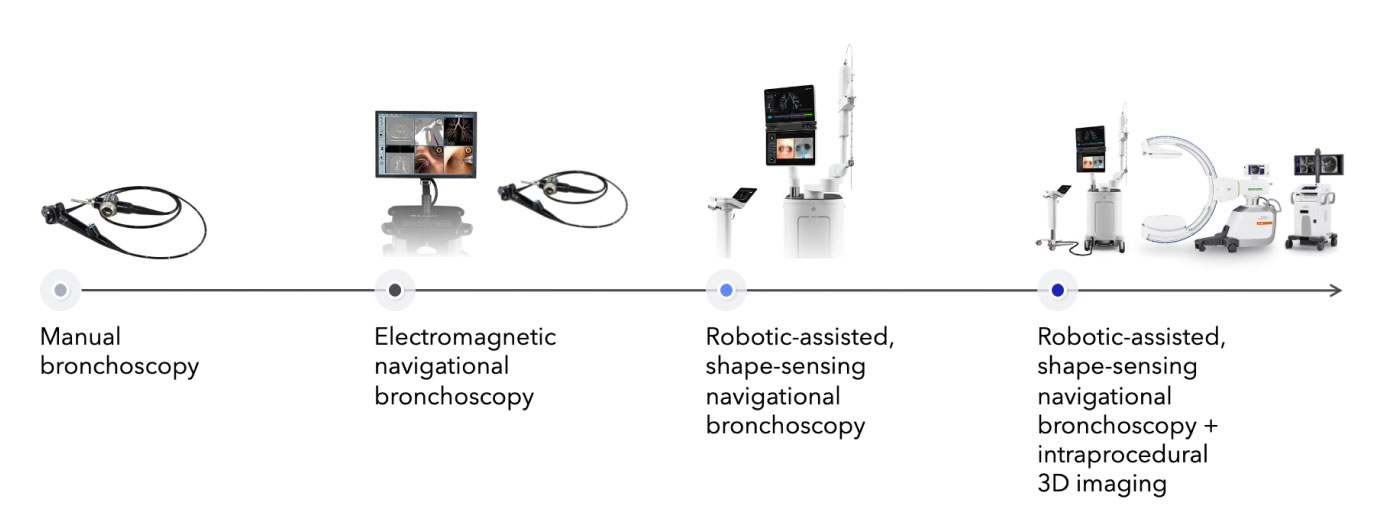
Why Robotic Bronchoscopy
1.8 M lung cancer deaths globally in 2020.1

Lung cancer is the leading cause of cancer deaths worldwide. In the U.S., the average five-year survival rate for all stages of non-small cell lung cancer (the most common kind) is 28%,2 compared with 91% for all stages of breast3 cancer and 97% for all stages of prostate4 cancer. One reason for the lower survival rate is that about 76% of patients diagnosed with lung cancer have nonlocalized disease, meaning the cancer is detected after it has spread beyond the initial tumor.5

The lungs are constantly moving, creating a critical need for precision and control during bronchoscopic procedures. Ion’s pioneering use of shape-sensing technology helps physicians answer this need. Its integration with 3D cone-beam CT systems offers further refinement. Shape sensing provides real-time data about the catheter’s exact location, shape, and orientation throughout the navigation and biopsy process.9 Integration with intraprocedural 3D imaging helps to account for CT-to-body divergence, which is a difference in the nodule location seen in static preprocedural CTs and intraprocedural imaging.8
Ion expands possibilities by advancing efficiencies across the lung care continuum. It wasn’t designed to answer every need; but to support finding answers faster along a less invasive path to diagnosis.
Get in touch for additional information about Ion and to have your questions answered.

Thank you for your submission.
Ion endoluminal system
The Ion endoluminal system (Model IF1000) assists the user in navigating a catheter and endoscopic tools in the pulmonary tract using endoscopic visualization of the tracheobronchial tree for diagnostic and therapeutic procedures. The Ion endoluminal system enables fiducial marker placement. It does not make a diagnosis and is not for pediatric use.
Information provided by the Ion endoluminal system or its components should be considered guidance only and not replace clinical decisions made by a trained physician.
For summary of the risks associated with bronchoscopy refer to www.intuitive.com/safety.
The Flexision biopsy needle is used with the Ion endoluminal system to biopsy tissue from a target area in the lung.
The PlanPoint Software uses patient CT scans to create a 3D plan of the lung and navigation pathways for use with the Ion endoluminal system.